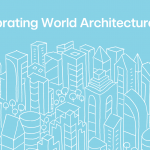13 May 2022
In this Q&A, three experts share how possible a world of green buildings really is, and the strategies to get there.
As calls to mitigate climate change grow in urgency and volume across the world, governments and businesses are increasingly looking at how to make every aspect of our lives more sustainable.
Buildings are no exception. Greener infrastructure promises to improve energy efficiency, with sustainable design one of the poster boys for ESG initiatives in architecture. We ask three experts for their take on this huge trend.
Is it possible for nations to be made entirely of green buildings?
Jason Kee, Senior Associate Architect, RSP Vietnam: It is possible for developed countries with stable economies such as Singapore, where RSP was involved in landmark projects such as Jewel Changi Airport.
High-tech green buildings are often equipped with green technology, which is rather costly, and the payoff will only be observed 10 years later. Developing countries can use local building materials and passive design strategies to start.
Goh Pin Jia, Director, AC Consortium: The diversity of building typologies and their suitability for the various green solutions could pose a challenge. For example, it may be difficult to convince a client with an open production yard to turn functional space into green spaces that require maintenance. Hopefully, Singapore can be an example to other countries for green buildings and infrastructure.
Ng Beow Suan, Associate Director, Squire Mech: With streamlining new development of green buildings underway, and retrofitting existing buildings to follow suit, it is possible.
How might designs better save energy?
Jason: Make use of a tropical climate to create comfortable spaces requiring minimal electricity by tapping on natural ventilation, sunlight and building orientation. Lesson learnt from the pandemic: a space with good natural ventilation is much preferred compared to air-conditioned spaces.
Pin Jia: Of the alternative energy sources, the most common one used in buildings is solar energy, and the cost of solar panels has fallen in recent years. We are working on Samwoh Smart Hub, the first positive energy building in Singapore. To achieve this status, the design approach was to minimise energy consumption and offset it with at least 110% on-site solar power.
Beow Suan: Design to incorporate natural ventilation and create air movement. We have used tools to simulate and achieve cross ventilation in projects like CapitaGreen, EDEN Singapore, and Holiday Inn Express Clarke Quay (which also incorporated a high volume low speed fan instead of air-con).
Advances in AI can also create smart buildings with features such as predictive energy consumption based on past usage records, and notifications of abnormalities of wastage. This translates to a smaller carbon footprint.
How can architects help clients embrace green solutions?
Jason: All clients want a product that’s current, if not ahead of the times, so they are interested in green buildings within budget. Highlight the boost to their reputation as a conscious developer and the better living environment.
Pin Jia: Present a portfolio of completed projects to inspire, and for easier visualisation of the long term benefits. Incorporate green solutions at the concept design stage, and back this up with data.
Beow Suan: Align clients’ corporate visions with global efforts towards sustainability, and demonstrate how green features are value for money.
Share




